Previous Accomplishments Reports

On this page:
The FY23 Accomplishments Report details major actions taken by ORCR from October 1, 2022, to September 30, 2023 to advance our mission. Read through the FY23 ORCR Accomplishments Report (pdf) .
Below are some highlights from the report. Check out the full report for all of ORCR's accomplishments for FY23.
- Prioritizing and Organizing Around Communities
- Creating More Resources to Educate Partners about Climate Adaptation
Prioritizing and Organizing Around Communities
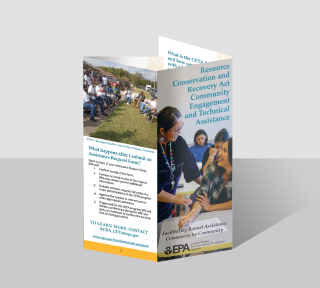
ORCR achieved a significant milestone with the development of the Good Governance Technical Assistance Tool. We piloted this innovative tool during FY 2023, specifically as part of a CCR outreach event, and refined the tool based on feedback from its practical use. The core objective of the Good Governance Project is to provide the public with effective points of contact to address their concerns, whether they are in or outside RCRA’s purview. When possible, people are directed to contacts at organizations with jurisdiction over their specific issues. The scope of the Good Governance database is extensive. It has 1,277 state, federal, and interagency contacts along with 111 technical assistance tools spanning various environmental health and public needs areas, such as flooding, spills, emergency response, coal ash, and climate change, among others.
We also launched the RCRA Community Engagement and Technical Assistance Program. It assists communities, addressing environmental and health concerns related to waste management by providing contractor support, resources, and information assistance. These services empower communities to develop informed opinions and conduct independent analysis about their RCRA waste-related concerns. Community engagement and technical assistance services range from providing support for community meetings to compiling summary information of technical and scientific documents in plain language. In addition, the program supports grassroots participation and fosters a collaborative working space for EPA and communities.
Creating More Resources to Educate Partners about Climate Adaptation
In FY 2023, ORCR stepped up investment in climate change work by bringing a Senior Climate Advisor onboard for a one-year detail and launching a national RCRA and PCBs Climate Change Team. Together with OLEM’s Climate Coordinating Committee, ORCR climate change staff completed training for internal staff, developed a new set of climate change webpages for release in FY 2024, and collaborated on two pilot RCRA climate vulnerability assessments. We successfully completed all FY 2023 climate adaptation implementation plan commitments, developing a memorandum on how to incorporate climate change into the RCRA corrective action process, and helping two municipalities and three Tribes develop disaster debris management plans. We developed two more memos on ways to consider potential adverse climate change impacts in the hazardous waste permitting process and incorporate climate change resilience measures into PCB approvals. Finally, we presented 12 times to our partners on current climate work, including outreach to industry and regulators on the new Sea Level Rise Visualization Tool.
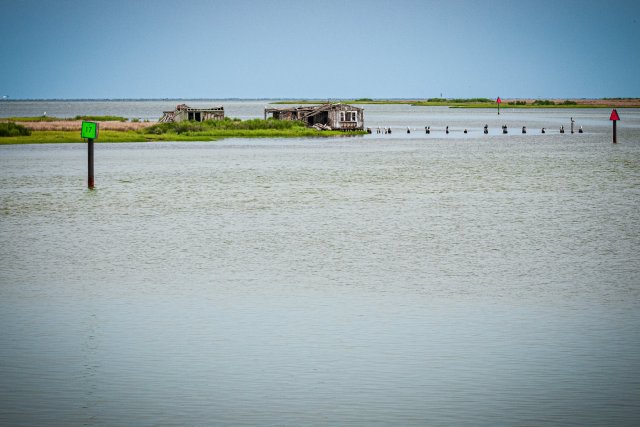
All 56 States, Territories, and the District of Columbia Applied for Bipartisan Infrastructure Law Funding
On November 15, 2022, the first anniversary of the Bipartisan Infrastructure Law, ORCR announced two new Requests for Applications: the Solid Waste Infrastructure for Recycling for Communities funding opportunity (or SWIFR for Communities), and the Recycling Education and Outreach grant program. The Bipartisan Infrastructure Law established and funded these programs. On the same day, ORCR launched the Model Recycling Program Toolkit, a new searchable web application that shares EPA tools and resources on recycling, composting, reuse, and other materials management activities. With this toolkit, the public can find a range of resources, including case studies from communities that have created effective recycling, composting, reuse, and repair programs as well as training materials on how to create messages that drive behavior change.
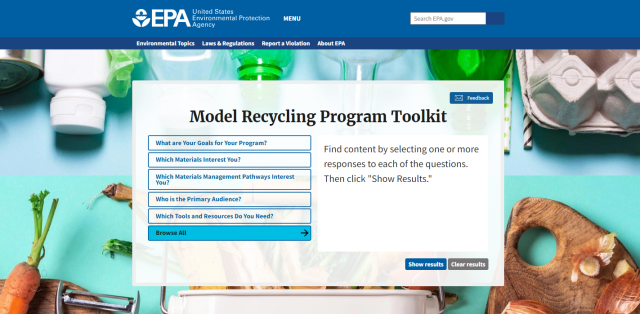
On January 4, 2023, ORCR’s Resource Conservation and Sustainability Division announced the SWIFR funding opportunity for Tribes and Intertribal Consortia to invest in the health of Tribal nations and their communities. ORCR also announced a SWIFR funding opportunity for states and territories. All 56 states, territories, and the District of Columbia applied for and were awarded funding by the end of FY 2023.
FY 22 Accomplishments Report
The FY22 Accomplishments Report details major actions taken by ORCR from October 1, 2021, to September 30, 2022 to advance our mission. Read through the FY22 ORCR Accomplishments Report (pdf) .
Below are some highlights from the report. Check out the full report for all of ORCR's accomplishments for FY22.
- Ensuring Proper Waste Management through e-Manifest
- Providing Financial Support to Tribes
- Issued Memorandum on the Open Burning and Open Detonation of Waste Explosives Under RCRA
- Cleaning Up Contaminated RCRA Facilities
- Engaged with Many Groups to Launch New Recycling and Infrastructure Work
- Published Part One of the Circular Economy Strategy Series
- Reducing Food Loss and Waste
- Creating Resilient Communities through All Hazards Waste Management Planning Tool Update
- Developed Water Reuse Action Plan Sewer Ban Fact Sheets
- Published Drum Reconditioner Damage Case Report
- Took Key Steps to Protect Groundwater from Coal Ash Contamination
- Published New Modules to Accompany Solid Waste Management Toolkit for Developing Countries
- Working on the Safe International Management of Waste
Ensuring Proper Waste Management through e-Manifest
EPA’s Office of Resource Conservation and Recovery has continued to improve data quality in the e-Manifest system and increase the number of users registered for e-Manifest. At the end of FY22, we added new e-Manifest system functionality, allowing regulators to request specific corrections from hazardous waste generators, transporters, and receiving facilities. Based on data we provided, the EPA Paper Processing Center corrected over 200,000 manifests. Additionally, we began conceptualizing a “Roadmap to 100% Electronic Manifests,” incentivizing partners toward adopting fully electronic documentation and reporting of manifests. We appointed six new and two former members to the Hazardous Waste e-Manifest System Advisory Board.
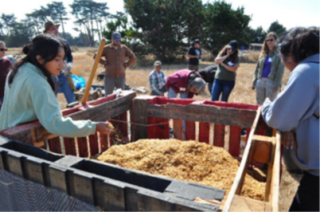
In collaboration with the American Indian Environmental Office, ORCR funded about $600,000 worth of projects aimed at implementing hazardous waste programs. We also initiated a new solid waste grant program in FY22 to provide financial support to Tribal governments, Tribal consortia, and other entities for proper solid waste management in Indian country. We received 18 strong proposals and expect to award seven to nine in FY23. In FY22, we led 11 webinars with topics ranging from recycling to developing waste codes and ordinances – totaling nearly 1,000 participants.
Issued Memorandum on the Open Burning and Open Detonation of Waste Explosives Under RCRA
In June 2022, in response to concerns raised by states and environmental and community groups, we issued a memorandum to communicate existing requirements and provide guidance to EPA regions, states, and territories for permitting open burn/open detonation units under RCRA. We made clear that under the existing regulatory requirements, OB/OD facilities must evaluate – and re-evaluate—whether safe alternative technologies are able to treat their waste explosives. In addition, we provided implementation support and technical assistance to regions and states for several OB/OD facilities, including Clean Harbors Colfax in Louisiana, Holston Army Ammunition Plant in Tennessee, Indian Head Naval Surface Warfare Center in Maryland, and Andersen Air Force Base in Guam.
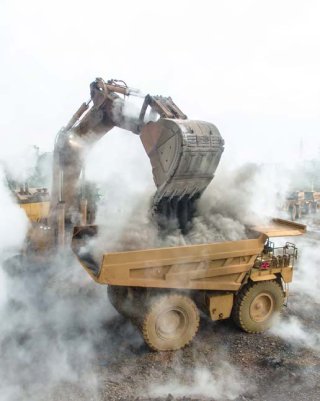
ORCR led the national RCRA Corrective Action Program in directing and overseeing owner and operator cleanups at RCRA hazardous waste treatment, storage, and disposal facilities. In FY22, EPA continued to focus on groundwater assessment and cleanup, data management improvements, management of remediation waste, public participation in cleanups, as well as Ready for Anticipated Use (RAU) implementation. RCRA facility cleanups reduce risks to and help support redevelopment of surrounding communities.
In FY22, the Corrective Action Program made significant progress on the RCRA RAU Long-Term Performance Goal outlined in “EPA’s FY22 – FY26 Strategic Plan.” The five-year goal is to make 425 more RCRA corrective action facilities RAU-compliant by September 30, 2026. This year, the program surpassed its annual goal of 114 facilities and achieved RAU compliance at 124 facilities.
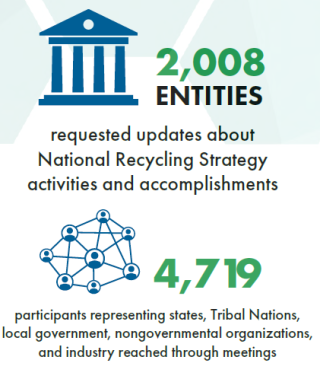
The 2021 Bipartisan Infrastructure Law provides EPA with immense federal funding to develop and implement new initiatives to support communities and spur industry toward creating a circular economy for all. This funding supports implementation of EPA’s Circular Economy Strategy Series and the Solid Waste Infrastructure for Recycling grant program authorized under the Save Our Seas 2.0 Act. The Bipartisan Infrastructure Law also authorizes a new Recycling Education and Outreach grant program, as well as Battery Collection Best Practices and Labeling Guidelines. We are now designing new grant programs and battery guidelines with meaningful input from a wide range of groups.
The Circular Economy Strategy Series outlines a transformative 10-year vision that embraces circularity and sustainable materials management. EPA launched the National Recycling Strategy, the first part of the series, on the same day that the U.S. President signed the Bipartisan Infrastructure Law: November 15, 2021, America Recycles Day. The National Recycling Strategy— published in English and Spanish—highlights the actions needed from governments, industry, and others to modernize our recycling and waste management system.
Eighteen actions identified in the strategy are underway; 13 of which are EPA-led. Actions include creating a national map of existing recycling infrastructure, conducting a financial needs assessment related to recycling infrastructure in the United States, researching domestic and international circular economy policies, providing grants to support community recycling programs, and developing a recycling measurement guide for state, local, and Tribal governments.
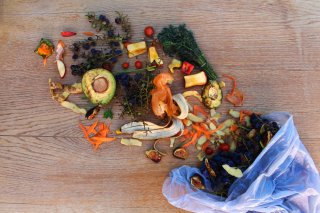
In the Fall of 2021, we updated our interpretation of the 2030 food loss and waste reduction goal to align with the United Nations Sustainable Development Goal Target 12.3: cutting in half the amount of food leaving the human food supply chain. This replaced the original interpretation that aimed to cut in half the amount of food going to landfills and combustion facilities. In late 2021, ORCR and Office of Research and Development (ORD) held a meeting with state and local governments, nongovernmental organizations, industry, and academic partners to solicit input on 1) key actions EPA could take to help the U.S. achieve the 2030 Food Loss and Waste Reduction Goal and 2) research needs to help inform ORD’s research planning. In early 2022, we announced the selection of 11 organizations to receive two million dollars to expand anaerobic digester capacity nationwide.
On August 10, 2022, ORCR publicly launched the latest version of our All Hazards Waste Management Planning (WMP) Tool (wasteplan.epa.gov). Using this tool, communities can enter information and obtain input on what waste streams they can expect after a disaster, and where these wastes can be managed. This is for both man-made disasters (i.e., chemical, biological, radiological) or natural (i.e., hurricane, tornado, flood). Waste management is an area of disaster response that can easily be overlooked until the community is faced with large debris piles after one occurs.
The tool also provides a platform for recording information like what sampling and analysis of the wastes may be required, waste management strategies, staging area locations, transportation issues, waste tracking and reporting, as well as community outreach and resource needs.
Developed Water Reuse Action Plan Sewer Ban Fact Sheets
As part of our participation in the “Water Reuse Action Plan,” we developed two fact sheets about the prohibition on disposing of hazardous waste pharmaceuticals down the drain by flushing or pouring down a sink. This prohibition, a component of the 2019 Hazardous Waste Pharmaceuticals Rule, is often referred to as the “sewer ban” and affects healthcare facilities and reverse distributors of all sizes in all states, territories, and Indian country. EPA wrote the first fact sheet as an introductory fact sheet for a broad audience. EPA wrote the second fact sheet for operators of publicly owned treatment works. Both fact sheets included questions and answers about the sewer ban.
Published Drum Reconditioner Damage Case Report
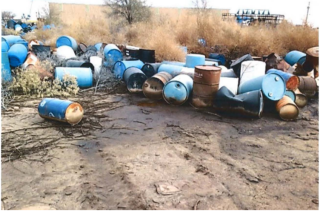
On September 8, 2022, we published a Drum Reconditioner Damage Case Report that examines documented instances where incidents at drum reconditioning facilities caused significant and lasting damage to human health and the environment. Of the total 181 drum reconditioning facilities identified by EPA, 86 had one or more reported damage cases, representing 47.5 percent of the industry. Damages include fires; drum explosions; hazardous waste spills; improper storage of drums; employee injuries; air, water, or soil contamination; and various combinations of these incidents. This report also analyzes the regulatory and waste issues surrounding drum reconditioning facilities. Finally, this report notifies the public of the issue and engages interested parties early in the process of addressing these issues, particularly on methods to prevent future damage to human health and the environment from drum reconditioners.
This year, we took several actions to protect communities and hold facilities accountable for controlling and cleaning up the contamination created by decades of coal ash disposal. Coal combustion residuals (CCR or coal ash), a byproduct of burning coal in coal-fired power plants, contains contaminants like mercury, cadmium, and arsenic that without proper management can pollute waterways, groundwater, drinking water, and the air.
These actions advance the Agency’s commitment to protecting groundwater from coal ash contamination and include: proposing decisions on requests for extensions to the current deadline for initiating closure of unlined CCR surface impoundments; putting several facilities on notice about their obligations to comply with CCR regulations; and describing future regulatory actions to ensure coal ash impoundments meet strong environmental and safety standards. EPA is committed to working with states to ensure robust protections for communities.
Published New Modules to Accompany Solid Waste Management Toolkit for Developing Countries
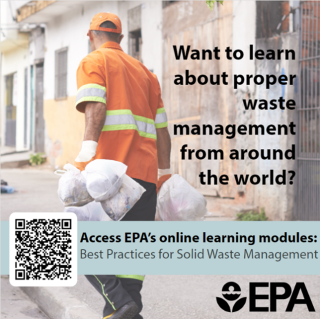
In FY22, we released a series of nine new online learning modules to accompany EPA’s Best Practices for Solid Waste Management: A Guide for Developing Countries. The new modules offer users an interactive way to explore specific solid waste management topics from this guide at their own pace.
The guide and modules present local and state decisionmakers in developing countries with best practices, information, and resources to address solid waste management challenges in their communities. ORCR’s Solid Waste Management toolkit provides a comprehensive “one-stop shop” for decisionmakers, combining a guide document and interactive modules with electronic links to detailed information on critical solid waste management topics.
The guide is also available in Spanish and French with additional languages being added in FY23.
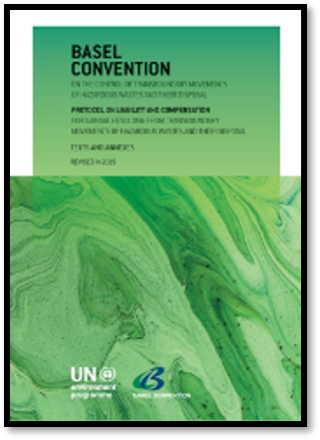
We coordinated with a variety of U.S. constituents and other federal agencies to successfully represent U.S. interests at several Basel Convention meetings in FY22, including the Basel Convention’s Conference of the Parties. Here countries decided they would control exports and imports of hazardous and non-hazardous electrical and electronic waste starting in January 2025.
ORCR aided in the development of technical guidelines on the environmentally sound management of plastic scrap and waste. Countries are eager to help inform negotiations to establish a global agreement to address plastic pollution in the coming years.
Despite the U.S. not yet ratifying the Convention, it offers an opportunity to help ensure the environmentally sound management of recycled materials traded with other countries. This would strengthen markets and facilitate more circular approaches to critical materials. For these reasons, EPA identified strengthening U.S. participation in the Basel Convention in the National Recycling Strategy published in November 2021.
